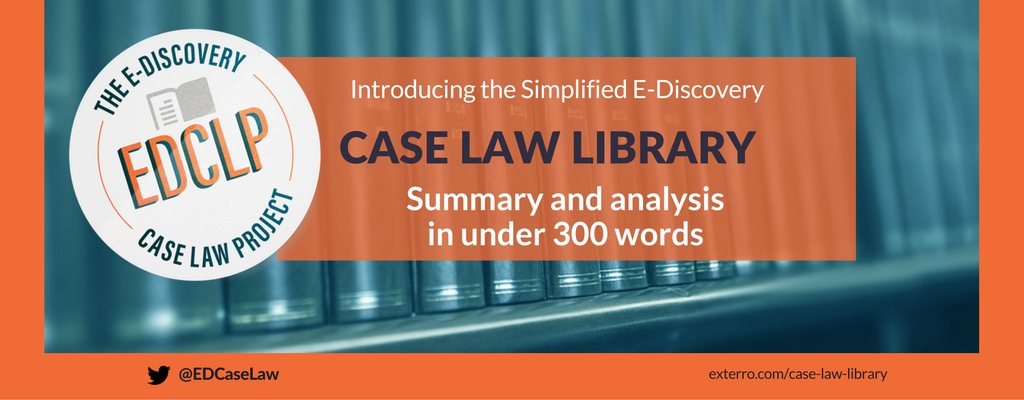E-Discovery
3 Lessons from E-Discovery Case Law in June 2023
June 27, 2023
While the explicit rules governing e-discovery haven't changed significantly over the last several years, with the last major update to the Federal Rules of Civil Procedure (FRCP) coming in 2015, the practice of e-discovery is constantly changing. Technology is constantly evolving. Parties to litigation don't just produce email correspondence, Office documents, and PDFs. Social media, ephemeral messaging apps, text messages, health trackers, cell phone geolocation data, and more can serve as relevant evidence in litigation. And that's not even considering the changes in the technologies legal practitioners use to preserve, collect, and review data in litigation.
And frequently, the practice of e-discovery, especially where it intersects with new technologies, is transformed by the rulings that judges make in the course of litigating disputes. These rulings contribute just as much to the practice of e-discovery (if not more) than the FRCP, as the judges making the rulings interpret the spirit of the legal system and apply it to novel situations. That's why Exterro created the Simplified E-Discovery Case Law Library, a compendium of interesting and important case law rulings that e-discovery professionals can turn to help keep up with the latest and most important trends in their discipline.
Some recent rulings have highlighted three ways that e-discovery professionals need to prepare to deal with today's data landscape in regards to civil litigation.
Define policies for BYOD, international, and other unique data situations--or the courts may do it for you.
In Owen v. Eslastos Foundation, an international employee briefly used his personal email account to forward a message to his work account, potentially opening it up for discovery in the course of civil litigation. In this case, absent evidence that the party used his personal email for a significant amount of work-related tasks, the courts did not grant access to that data source--but it's better to define policies around such use in advance. Patricia Antezana of ReedSmith explains, "As employees may use personal accounts to conduct work in different jurisdictions, parties must consider the many nuances that might affect their discovery obligations, including choice of law factors, relevance and proportionality considerations, client policies, and employee practices regarding use of personal devices."
Define your ESI protocol proactively, because courts will hold you to it.
In re Diisocyanates Antritrust Litigation illustrates the importance of getting your protocol right before discovery is well underway. The time to think about what data you have and what data you may want from opposition is before the 26 (f) conference, not after you've agreed to a protocol. In this case, litigants agreed to the use of search terms to cull data for production. After discovery started, one party moved to compel production of hundreds of thousands of additional calendar entries and text messages that produced "no hits under the relevant search criteria." The court denied the motion, as Hon. Andrew Peck (ret.) of DLA Piper explains, "Courts will hold parties to what they agreed to in their ESI protocol. Here, it was using keywords to review text messages and calendar entries. Moreover, the fact that keywords might miss relevant ESI did not persuade the court to require linear review, stating “search term methodologies are routinely used.” So be careful what you agree to in a protocol."
Be proactive in defining your production requests.
Similar to the case just mentioned, Mills v. Steuben Foods, Inc. doubles down on the reason for conducting a thorough early case assessment and setting very specific document product requests. If you leave the data format for production to chance, you may not be happy with what you get. In this employment discrimination case, the plaintiff issued a document request to the defendant seeking all documents in the defendants’ possession which pertain to the plaintiff. The defendants responded to the request with a “document dump” of 5,295 documents consisting of 111,896 pages. The plaintiff moved for re-production in a text-searchable format--to no avail. Citing the plaintiff’s original requests did not specify that the documents be produced in a particular format, the court ruled the documents provided were reasonably usable or in their originally maintained format. As David Cohen reminds, "be careful what you ask for and how you ask for it. A party’s “document dump” claims are unlikely to gain traction where the volume results from the breadth of the request (“all documents.. relating to plaintiff…”)."
